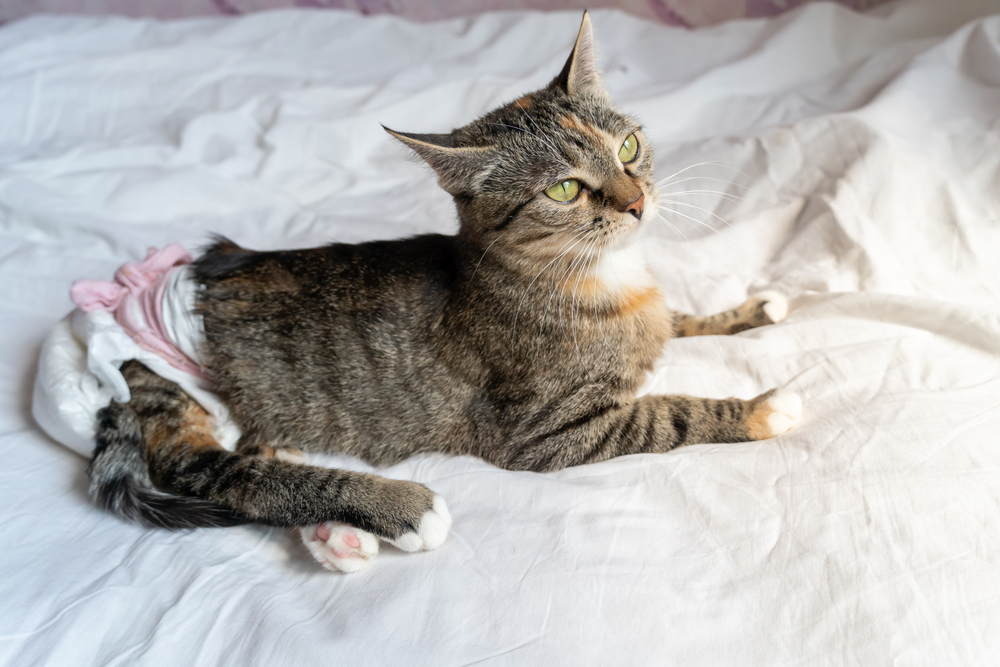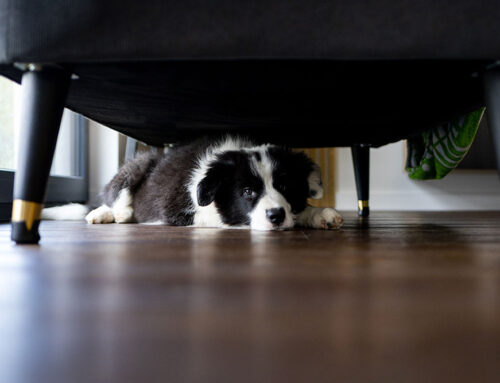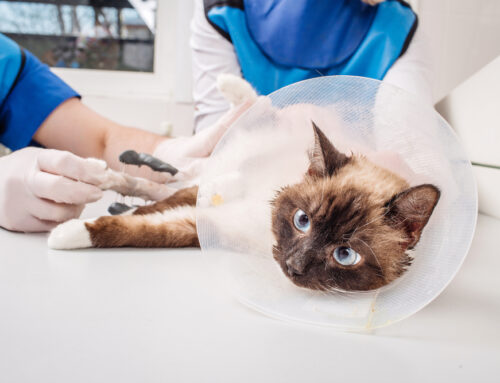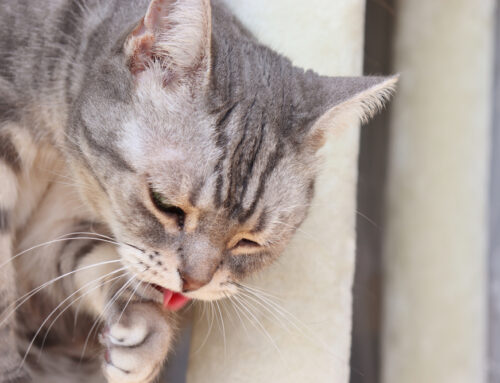Blocked Cats, Big Risks: Recognizing the Emergency Hiding in the Litter Box
Greenfield Veterinary Clinic | Greenfield, Wisconsin
Watching a cat strain in the litter box without success, cry out in pain, or suddenly become withdrawn can cause immediate alarm. These symptoms may indicate a urinary blockage, one of the most urgent and life-threatening conditions affecting cats. At Greenfield Veterinary Clinic, prompt recognition and treatment of urinary obstructions is part of our commitment to safeguarding feline health in our community.
Urinary blockages are painful, dangerous, and can become fatal if not addressed quickly. This guide will help you recognize the signs, understand the causes, and know exactly what to do next.
What Is a Feline Urinary Blockage?
A urinary obstruction occurs when material in the urethra prevents normal urine flow from the bladder. Male cats are especially susceptible because their longer, narrower urethra can become obstructed by mineral crystals, mucus plugs, or inflammatory debris. When urine cannot exit, toxins build up rapidly, leading to electrolyte imbalances, kidney damage, and potentially fatal complications within 24–48 hours.
Recognizing Early Warning Signs
Detecting symptoms early can save your cat’s life. Watch for:
- Frequent trips to the litter box with little or no urine
- Straining or crying while trying to urinate
- Bloody or pink-tinged urine
- Hiding, restlessness, or loss of appetite
- Vomiting or drooling due to toxin buildup
- A swollen, painful abdomen
Even mild symptoms can progress quickly. Tools like the Feline Grimace Scale can help owners identify pain that might not be obvious.
When to Seek Immediate Veterinary Care
Any cat showing signs of urinary difficulty should be seen right away. During regular business hours, Greenfield Veterinary Clinic’s emergency services are available to handle urgent cases. For after-hours emergencies, we can guide you to the nearest 24-hour facility to ensure your cat receives care without delay.
Common Causes of Urethral Obstruction
Idiopathic Inflammation
When the bladder lining becomes irritated without infection, it is called feline idiopathic cystitis. Inflammation increases mucus production and muscle spasms that can plug the urethra. Managing stress and enrichment can reduce flare-ups.
Crystals and Stones
Urine pH imbalances and concentration can lead to struvite or calcium oxalate crystal formation. Over time, these crystals may form stones that obstruct the urethra. Specialized diets and hydration strategies help reduce recurrence, following urinary stone guidelines.
Bacterial Infections
Though less common in cats than dogs, bacterial infections can inflame the bladder and create debris. Prompt culture and sensitivity testing ensures targeted treatment of urinary tract infections.
Mucus and Cellular Plugs
Inflammatory cells, blood, and mucus sometimes combine into soft plugs. Catheterization followed by gentle bladder flushing is often required to restore flow.
Diagnostic Approach at Greenfield Veterinary Clinic
When you arrive, our team acts quickly to stabilize your cat and confirm the diagnosis.
- Physical Examination – The bladder is palpated to check for firmness and distension.
- In-House Laboratory Testing – Our diagnostic lab provides same-day results for kidney function, electrolytes, and infection markers.
- Imaging – Digital X-rays identify stones, while ultrasound evaluates bladder wall thickness, inflammation, or debris.
These steps give us a complete picture and guide safe catheter placement and treatment.
Emergency Treatment Protocol
- Intravenous Fluids rehydrate, correct electrolyte imbalances, and support kidney function.
- Pain Management alleviates discomfort and reduces urethral spasms.
- Urethral Catheterization gently clears the blockage under sedation.
- Bladder Flushing removes residual debris and lowers the risk of re-obstruction.
Monitoring and Supportive Care
Hospitalization ensures ongoing fluids, pain relief, and monitoring of urine output. If infection is confirmed, targeted antibiotics are prescribed. Cats remain under close observation until stable. In some cases, medications that relax the urethra are also used to prevent spasms and reduce the likelihood of re-blockage after catheter removal.
Surgical Options for Recurrent Blockages
For cats with repeated obstructions despite medical management, surgery may provide the best long-term outcome. A perineal urethrostomy (PU) creates a wider urethral opening by removing the narrowest portion of the urethra near the penis. This significantly reduces the chance of future obstructions, especially in cats prone to frequent crystal or plug formation.
While PU surgery does not prevent urinary disease altogether, it makes blockages much less likely and can be life-saving for cats with multiple episodes.
Recovery typically involves several days of hospitalization for pain control, close monitoring, and supportive care. Owners should expect a few weeks of restricted activity at home, with litter box adjustments to prevent contamination of the healing surgical site. Long-term, cats who undergo PU surgery generally live normal, healthy lives, though they still benefit from urinary diets and stress management.
At Greenfield, our surgical team provides advanced monitoring throughout the procedure and detailed aftercare instructions to support both cats and their families during recovery.
Preventing Future Obstructions
Routine Wellness Exams
Biannual preventive visits allow us to detect subtle kidney or urinary changes before they become emergencies. Exams often include urinalysis, bloodwork, and imaging when needed. Cats with recurring problems may also benefit from referral to internal medicine for more advanced management. Preventive care is the cornerstone of keeping your cat comfortable long-term.
Litter Box Habits Matter
Cats are particular about their bathroom routines, and poor litter box conditions often contribute to urinary problems. Boxes should be large, low-entry, and placed in quiet locations. In multi-cat households, one box per cat plus one extra is recommended to reduce conflict. The cat litter box guide highlights how box type, litter texture, and cleanliness affect feline urinary health.
Hydration and Diet
Encourage your cat to drink more by offering wet food, placing bowls throughout the house, or using a fountain. Prescription urinary diets help maintain balanced urine pH and mineral content, and some can even dissolve certain types of crystals. Cats on dry food alone are at higher risk, so incorporating moisture-rich meals is one of the simplest and most effective preventive steps.
Stress Reduction
Stress plays a major role in urinary issues. Cats thrive on predictability, so maintaining a consistent feeding and play schedule can help. Provide vertical climbing spaces, cozy hiding areas, and daily interactive play sessions. DIY enrichment toys and resources like the Indoor Pet Initiative give owners creative ways to reduce feline stress in multi-pet households or busy homes.

Why Choose Greenfield Veterinary Clinic
From advanced in-house diagnostics to skilled surgical care, our facility is equipped to handle urgent cases with compassion and precision. We treat each cat as family, combining clear communication, modern medicine, and a commitment to long-term wellness.
Helping Your Cat Find Relief
Seeing your cat struggle in the litter box is distressing, but you don’t have to face it alone. Call us at (414) 282-5230 or go to your nearest veterinary ER if you suspect a blockage.
For long-term support, schedule a wellness exam to discuss preventive strategies and personalized care. At Greenfield Veterinary Clinic, we are here to provide immediate relief, preventive guidance, and lifelong support for your feline companion.







Leave A Comment